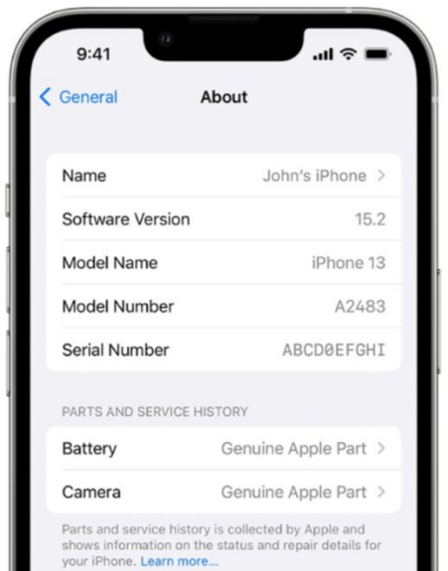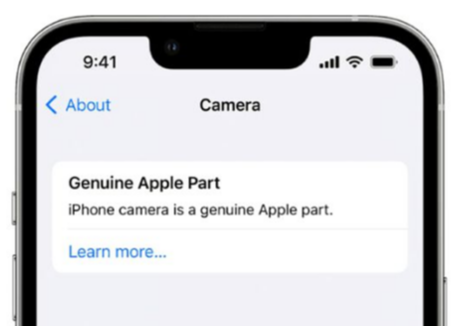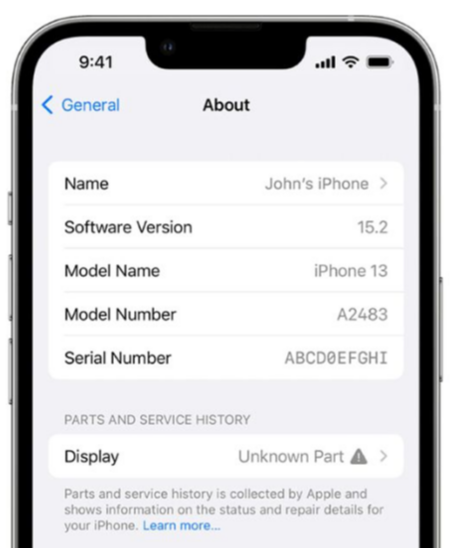
Last week, Apple released the iOS 15.2 RC preview version, and added a brand new feature to this version called "iPhone Parts and Service History." The purpose of this feature is to let iPhone users know the repair history of their devices and check whether the parts replaced during repairs are genuine. This feature is very useful for users, helping them better understand their equipment and ensuring the quality and authenticity of the repair process.

#Apple states in its official technical documentation: This feature supports iOS 15.2 or higher system versions. After upgrading, you can check the device’s parts repair records in iPhone settings. It should be noted that the system will automatically display component repair information only for equipment that has undergone repairs and parts replacement. iOS 15.2 is currently still in testing, and the official version is expected to be released as soon as next week.
Apple officials recently launched a new feature designed to ensure that original iPhone parts that meet Apple’s quality and performance standards can be used when repairing and replacing parts. These original parts include batteries, screens, camera lenses, etc., and have all been safety certified by Apple. This measure is designed to ensure that users get the best experience during the repair process.
You only need to perform simple operations to determine whether it is an original part. First, upgrade your iPhone system to iOS 15.2 or newer. Then, open the iPhone's "Settings" menu, click "General" and then "About This Mac." In the "About This Mac" page, you will be able to view the repair records of iPhone parts to determine whether they are original parts. This method is very simple and allows you to easily confirm the source of the part.

For iPhone XR, XS, XS Max and newer models, including iPhone SE (2nd generation), you can check to see if the battery has been replaced.
You can check whether the battery or display of iPhone 11, iPhone 12 and iPhone 13 has been replaced.
You can identify this by checking whether the battery, display, or camera of iPhone 12 and iPhone 13 has been replaced.
When using genuine Apple parts and tools for repair, the repair parts will be marked with the logo "Apple Genuine Parts" next to them. You can click on the logo to get more information, including service date and other relevant data.

If non-original parts are replaced, there are problems with the parts, or errors occur during the repair process, a gray exclamation mark will be displayed and one of the following warning messages will pop up: Non-original parts Factory part; already used or installed in another iPhone; not functioning as expected.

Apple will record repair history within the device, but this will not render the iPhone's battery, screen, or camera functional. The purpose of these records is to help Apple conduct security analysis and improve the use of future products.
If there are problems with the replaced parts themselves, or problems occur during the maintenance process, it will affect the normal use of the equipment. By launching this function, users can better understand the repair or replacement status of equipment parts, and can also use this function to determine whether the equipment parts are original when purchasing second-hand equipment.
Apple data management tool can selectively transfer device data from old iPhone to new iPhone, and allows selective backup and recovery of data required by old iPhone, and all files through this tool are previewable is the first choice tool for iPhone data backup and transfer.
The above is the detailed content of New features released in iOS 15.2 help you easily determine whether your iPhone is equipped with counterfeit parts. For more information, please follow other related articles on the PHP Chinese website!
 What drawing software are there?
What drawing software are there?
 Recommended order for learning c++ and c language
Recommended order for learning c++ and c language
 How to withdraw money on WeChat without handling fees
How to withdraw money on WeChat without handling fees
 The performance of microcomputers mainly depends on
The performance of microcomputers mainly depends on
 How to use jsp programming software
How to use jsp programming software
 The Metaverse recognizes the top ten potential coins
The Metaverse recognizes the top ten potential coins
 How to delete a folder in linux
How to delete a folder in linux
 What to do if 302 found
What to do if 302 found
 what is ed
what is ed




